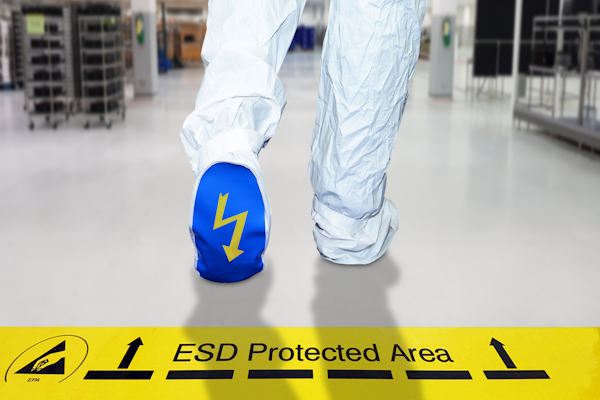What Is The ANSI/ESD s20.20 Standard?

Figure 1: A PLC typically has ANSI/ESD s20.20 certification to ensure protection against electrostatic discharge, increasing its industrial reliability.
The ANSI/ESD s20.20 standard is a guide created to protect electronic parts from static electricity. It is approved by the Electrostatic Discharge Association (ESDA) and the American National Standards Institute (ANSI). This standard improves the quality and life of electronic products by preventing static electricity damage. It is often used with items like circuit boards and semiconductors, which small amounts of static electricity can seriously damage.
ANSI/ESD s20.20 overview
This standard was created in 1999 by the ESDA. It was made to help avoid electrostatic discharge (ESD), which can damage electronic parts. It became an American National Standard in November 1999. Since then, it has been updated several times to keep up with changes in electronic technology and practices. The most recent version is the ANSI/ESD S20.20-2021.
How ESD occurs
ESD occurs when two objects with different electrical charges come into direct contact or come close enough that an electrical current can pass from one to the other. This often happens when objects are rubbed together, which causes electrons to move and create an imbalance of electrical charges. For example, ESD is experienced in everyday life as a static shock after walking on a carpet and then touching a metal doorknob.
In the context of electrical products, ESD can occur during the manufacturing, testing, shipping, or handling processes. For example, if a charged worker or tool touches a sensitive electronic component, the sudden flow of electricity can result in ESD.
How to mitigate ESD
The ANSI/ESD s20.20 standard provides a comprehensive framework for establishing, implementing, and maintaining an electrostatic discharge prevention program. Here are some key mitigation strategies outlined in the standard:
- Grounding/Equipotential bonding systems: All conductive components, equipment, and people in an ESD-protected area (EPA) should be bonded or electrically connected and grounded. This ensures that all items in the area have the same electrical charge or potential.
- ESD-protected areas (EPAs): Sensitive components should be handled and stored in designated areas free from static-generating materials and processes. These areas should be marked and controlled (Figure 2).
- Packaging and material handling: ESD sensitive items should be enclosed in static protective materials, and the transport of these items around and outside the EPA should be done in ESD protective packaging.
- Personnel training: All personnel handling ESD-sensitive items should undergo a training and awareness program to understand the potential risks and appropriate handling procedures.
- Compliance verification: Regular audits and equipment checks should be conducted to ensure ongoing compliance with the ESD control program.
- ESD control items: Use of items such as ESD-safe work surfaces, clothing, wrist straps, footwear, and floor materials to reduce static generation and provide safe pathways for charge dissipation.

Figure 2: ESD-protected areas should be clearly marked.
ANSI/ESD s20.20 certified products
The ANSI/ESD s20.20 certification is generally applied at the organizational or facility level. However, individual products can demonstrate compliance with the standard through proper design, manufacturing, and handling procedures.
For a product to be considered compliant to the standard, it might go through the following steps during production:
- Product design: The product should be conceived with electrostatic discharge protection in mind. This may involve using ESD-protective materials and incorporating design features that help mitigate the risk of ESD.
- Manufacturing process: The product should be manufactured in a facility that has implemented an ESD control program based on ANSI/ESD s20.20. This ensures that the product's exposure to ESD is minimized throughout the process.
- Product testing: Once manufactured, the product should go through testing to ensure it meets the standard's requirements. This may involve subjecting the product to various levels of electrostatic discharge to see how it performs.
- Packaging and handling: The product should be packaged and handled in a way that is compliant with the standard. This typically involves ESD-protective packaging and following ESD-safe handling procedures.
- Documentation: The company should document all steps taken to ensure the product's compliance with the standard. This includes records of the design and manufacturing processes, testing results, and packaging and handling procedures.



